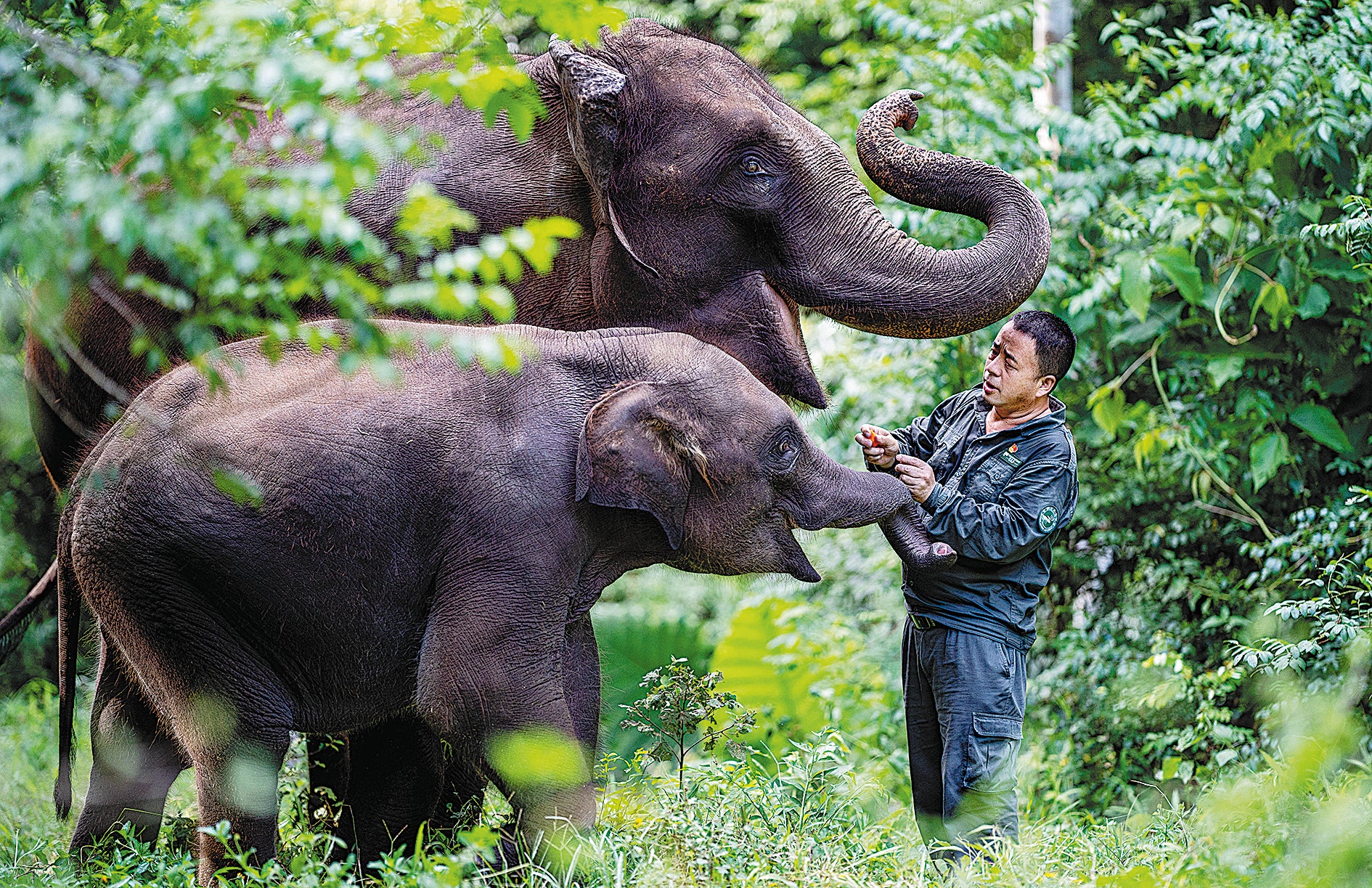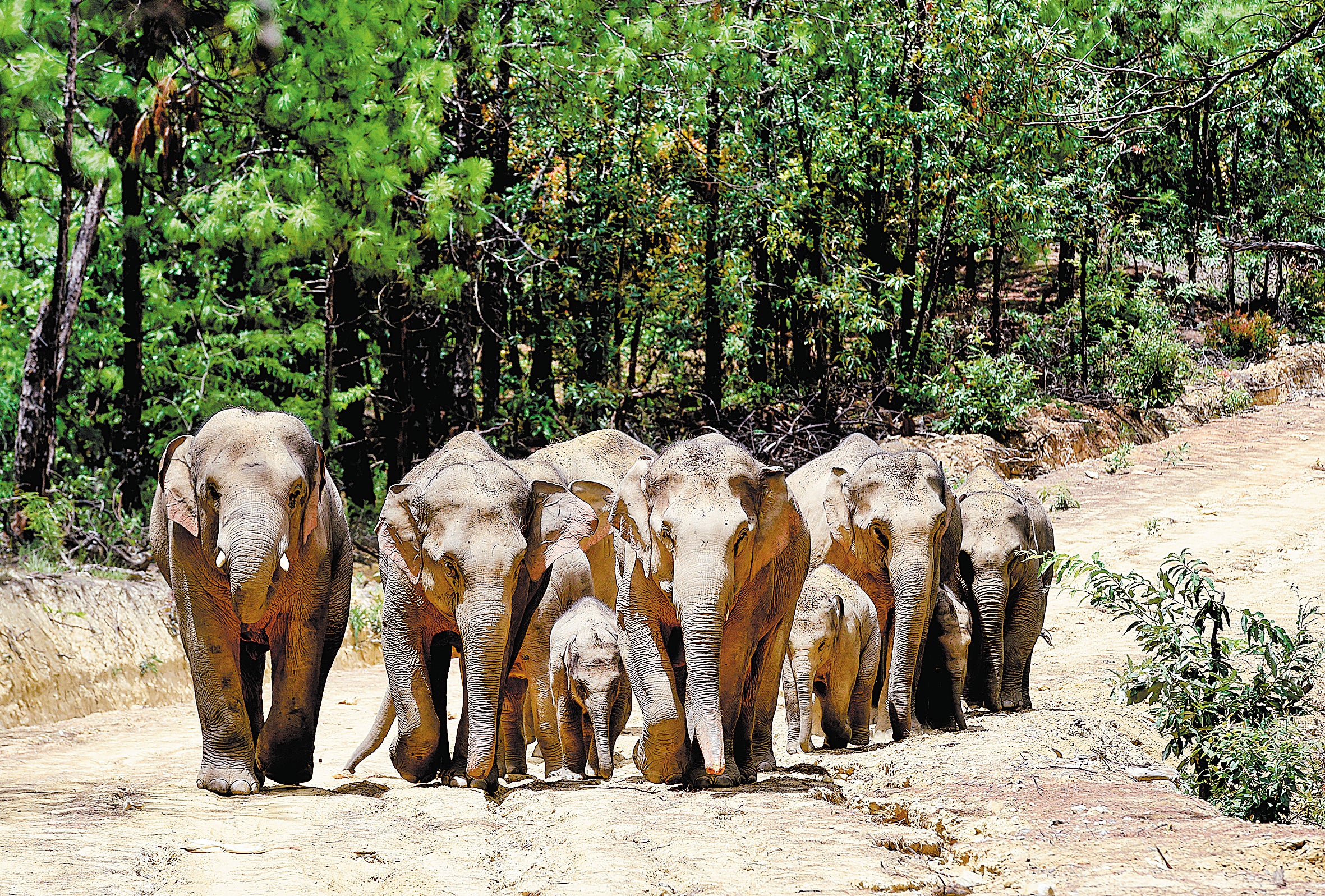Measures taken to reduce conflict with elephants
THE ARTICLES ON THESE PAGES ARE PRODUCED BY CHINA DAILY, WHICH TAKES SOLE RESPONSIBILITY FOR THE CONTENTS

Bao Mingwei, 42, a senior veterinarian at an elephant reserve in Yunnan province, thinks he knows the secret of his innate ability to attract the giant creatures. “Maybe I just smell like them,” he said.
“Sometimes I have to stand in the elephants’ dung, while other times my clothes are stained by them. We vets are also at risk of being attacked,” said Bao, who has worked at Wild Elephant Valley in the Xishuangbanna Dai autonomous prefecture for 22 years and is known as an “elephant doctor”.
In March last year, the story of a group of wandering Asian elephants made news around the world.
Three months later, a young male elephant left the herd and wandered alone for about 30 days. To ensure its safety, Bao anaesthetised the animal and took it to the Xishuangbanna National Nature Reserve. It was the first case in China of a wild elephant being taken back to its habitat after roaming over a long distance.
“There is scant material to refer to when rescuing elephants. Most of the time, we rely on our experience,” Bao said.
Bao followed the elephant for 33 days, estimating its weight by observing the animal’s physique, teeth and footprints in order to administer the correct dose of anaesthetic.

On August 8 last year, more than 10 elephants returned to their habitat in the Mengyang area of Xishuangbanna National Nature Reserve after wandering for more than 800 miles in about 110 days. Tens of thousands of people helped track the animals’ movements and guide them home.
The Asian elephant, the continent’s largest land mammal, is native to a total of 13 countries and regions. There are estimated to be 40,000 to 50,000 of the animals in the world. In China, the species is a first-class protected wild animal, and is found mainly in Xishuangbanna, Pu’er and Lincang, Yunnan.
Despite the population of Asian elephants falling over the past 30 years, the number of the animals in China rose to about 300 by the end of last year.
Xiangyanqing village, located on the perimeter of the reserve, is often visited by the elephants. Villager Duan Zhongming said, “They ate corn at our home, and we had to hide upstairs.”
In 2017, one of China’s first pilot projects to prevent attacks from elephants was launched in the village, where barriers were erected to keep the animals out. Now, a half mile-long guardrail surrounds the village to protect residents. Tourism is also being developed locally.
Conflict between humans and elephants is not uncommon in Asian countries such as Sri Lanka and India.
In Yunnan, a monitoring and alert system tracks elephants’ movements. Infrared cameras and drones are also used for this work. To avoid coming into contact with the animals, residents receive real-time messages detailing the elephants’ locations through an app, social media and radio.
On July 31, elephant observer Diao Faxing, 47, woke at 5am to examine footage from a drone. He confirmed that every elephant herd in Dashujiao village, Jiangcheng county, Pu’er, was at a safe location. Diao then sent a voice message to the village’s WeChat group, and after hearing that the elephants were in a safe location, residents set out to start farm work.
During the day, Diao and his colleagues monitored the elephants and informed villagers of the animals’ movements. They also observed the elephants’ health.
Diao is one of 64 observers in Pu’er contributing to a 24-hour alert system. He and his colleagues follow the elephants in vehicles, bringing along drones, sleeping bags, clothing and simple stoves. They go to sleep around 1am, sometimes in villagers’ homes.
Information obtained about the elephants is uploaded to an app developed in the county.
Last year, the authorities in Pu’er spent 1.15 million yuan (£142,000) on 18 drones and also installed solar energy street lamps, safety warning boards and protection barriers to ensure residents’ safety.
